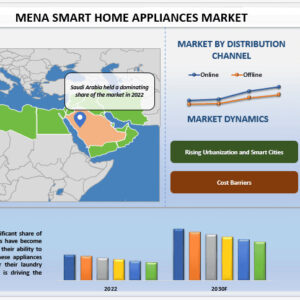Electricity, gas, steam, and water keep production lines running, facilities running, and workers comfortable, making utilities one of the biggest ongoing operating expenses for many businesses. Many companies are unaware, though, that a sizable amount of these expenses might be exempt from sales and use taxes.
States all over the United States provide businesses that directly use energy for manufacturing, processing, or other eligible production activities with utility tax exemptions and refund opportunities. But because they haven’t carried out a proper exemption study or tax recovery review, innumerable businesses still overpay sales tax on their utility bills.
Your company may be losing out on tens of thousands of dollars in potential refunds and future savings if it hasn’t checked its utility bills for any potential exemptions.
Why Utility Tax Exemptions Matter
The tax laws that determine which aspects of utility use are taxable and which are not are specific to each state. Generally speaking, energy used for administrative, heating, or lighting purposes is taxable, but energy used directly for production, manufacturing, or processing may be exempt from sales and use tax.
For instance, a manufacturer may be eligible for a full or partial exemption in many states if they use natural gas to power ovens, run compressors, or create steam for processing. Finding out where and how energy is used is crucial.
State laws, however, can be complex. Some demand a formal utility study or engineering analysis to demonstrate eligibility, while others have specific percentages of exempt usage required. For this reason, professional advice and precise measurement are crucial.
How Tax Overpayments Happen
For a number of reasons, businesses overpay utility sales tax:
- Ignorance: A lot of businesses are just unaware that there are exemptions.
- Incomplete documentation: In order to apply for tax relief, utilities need the appropriate exemption certificates, and failure to provide this documentation results in ongoing taxation.
- Operational modifications: Most businesses never update their certificates, even though expanding production lines, acquiring new machinery, or changing energy usage can alter exemption percentages.
- Erroneous utility allocations: Unless a thorough analysis separates the usage, utilities frequently tax the full bill when a facility’s energy serves both production and non-production areas.
Years of overpayment may result from these mistakes, but the good news is that states frequently permit businesses to recoup overpaid sales tax retroactively, usually for a maximum of three or four years.
Tax Recovery: Turning Overpayments Into Cash Flow
The process of finding and recovering sales and use tax that your business has overpaid is known as a tax recovery review. When done properly, it helps ensure future savings through updated exemption certificates in addition to recovering past dollars.
For instance, a utility study may reveal to a Pennsylvania manufacturer that production accounts for 70% of its natural gas consumption. With that data, the business could apply the exemption moving forward and request a refund of taxes paid during the previous three years, which would result in significant yearly savings.
In addition to providing the documentation that utilities and state taxing authorities need, a professional utility exemption study quantifies your energy consumption patterns. This guarantees that you stay in compliance and that your refund claims are fully supported.
A professional utility exemption study quantifies your energy consumption patterns and provides the documentation utilities and state taxing authorities require. This ensures that your refund claims are fully supported and that you remain compliant for future billing cycles.
Industries That Benefit Most
Although the main beneficiaries are manufacturing companies, many other industries may also be eligible for tax recovery and utility exemptions. These consist of:
- Ovens, refrigeration, and bottling lines used in the production of food and beverages
- Reactors, clean rooms, and temperature control systems used in the manufacturing of pharmaceuticals and chemicals
- Technology companies and data centers: server operations, backup power, and cooling systems
- Molding machines and material handling equipment for plastics and packaging
- Activities related to crushing, screening, and processing in mining and extraction
Significant savings can result from even partial exemptions in these industries, especially in states with high utility rates or local sales tax add-ons.
The Process: How a Utility Exemption Study Works
- Information Gathering
In order to examine utility consumption trends, the process begins with collecting energy bills, meter data, and facility schematics.
- On-Site Assessment
Engineers come to your facility to look at how energy is used in the support, administrative, and production areas.
- Allocation of Use
To determine the proportion of utilities that are directly related to production, a comprehensive energy usage model is constructed.
- Record-keeping and Filing
The results of the study are recorded and sent to state and utility organizations in order to substantiate refund requests and create future exemption certificates
- Continuous Adherence to Compliance
Periodic reviews after exemptions are put into place, Make sure that operational changes don’t have an impact on your tax status or raise issues with compliance.
Common Mistakes Businesses Make
Even companies that try to claim exemptions frequently make expensive errors like:
- Submitting certificates of exemption that are not complete
- Using out-of-date usage rates from earlier research
- Making claims for non-qualifying operations exemptions
- Not updating certifications when processes or equipment change
These mistakes may result in audits, postponed refunds, or rejected claims. Working with a skilled tax recovery team guarantees that your claims are supported by engineering precision and that all documentation satisfies state requirements.
The ROI of a Utility Tax Review
A utility exemption or recovery project may yield a sizable financial return. The majority of businesses that finish a professional study receive refunds for several years’ worth of overpaid taxes in addition to continuous savings on all subsequent bills.
Additionally, many TaxMatrix clients recover five to ten times their initial review cost in refunds and exemptions, meaning that the process frequently pays for itself quickly.
Beyond the financial benefits, completing a utility study also helps improve your organization’s audit readiness. Your business can confidently defend its tax positions in the future with state-approved methodologies and clear documentation.
Final Thoughts
No company can afford to pass up valid savings opportunities in a climate where energy prices are on the rise and margins are getting thinner. One of the most efficient, legal, and frequently underutilized methods of cost reduction is through utility exemptions and tax recovery programs.
A thorough utility tax review can reveal hidden savings and improve your overall compliance strategy, regardless of the size of your business—from small manufacturers to large multi-state operations.
Businesses can turn routine utility expenses into a source of long-term financial efficiency by spotting overpayments, obtaining refunds, and putting in place appropriate exemptions.







